Birds With Long Necks are a wonder to watch as they stand out from the rest! Here are some of the most stunning kinds!
We have all seen birds of all kinds, right? Small, colorful, large, stout. But what about the ones with long necks? Well, those are kinda quirky! Let’s have a look at them!
Check out birds with white stripes on their wings here
Birds With Long Necks
1. Greater Flamingo
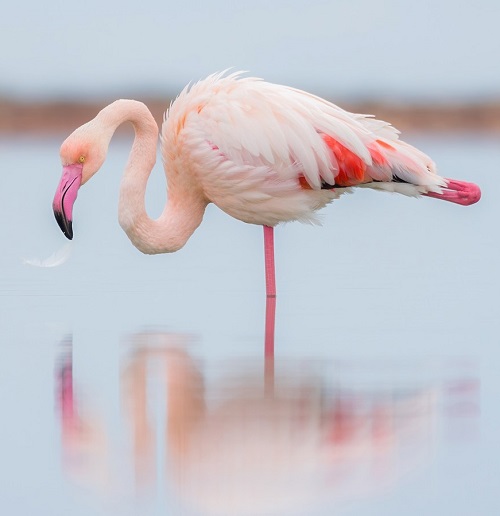
Scientific Name: Phoenicopterus roseus
The Greater Flamingo’s pink plumage along with its long neck is a head turner for sure! It’s slender legs also match well its body.
2. African Crowned Crane
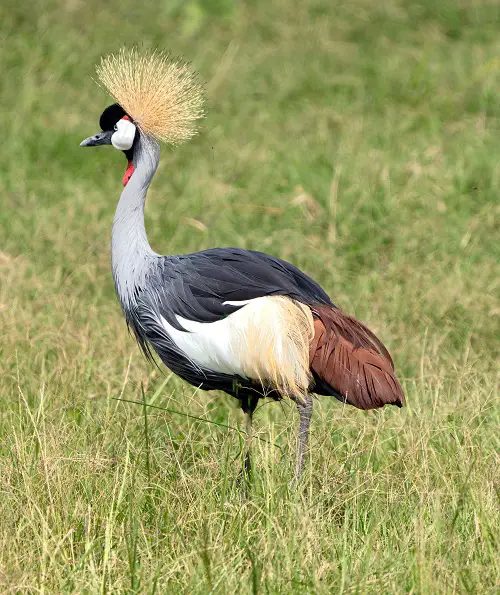
Scientific Name: Balearica regulorum
Recognized by its golden crown and throat wattle, this specie holds a cultural significance in Africa – quite an endangered one this is due to hunting.
3. Great Egret
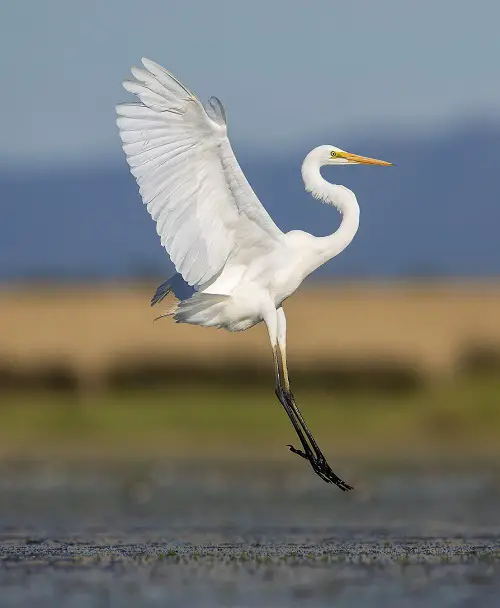
Scientific Name: Ardea alba
A graceful wetland wader with all-white plumage, and long, two toned legs stands out with is elegant white color! It also performs elaborate courtship displays.
4. Wood Stork
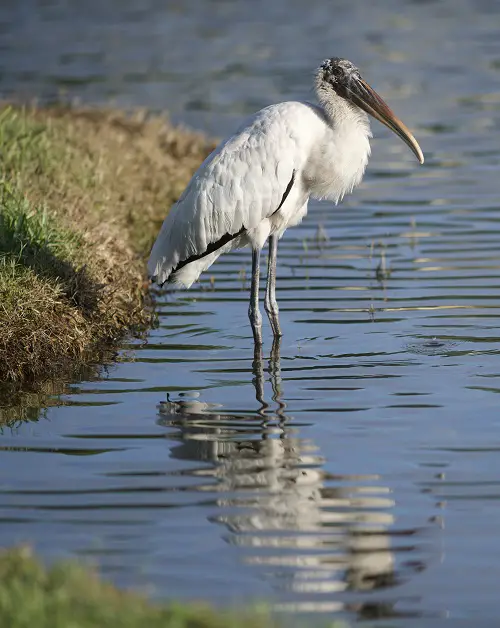
Scientific Name: Mycteria americana
Identified by its bald head and unique bill, this near-threatened wetland species has thick legs that are quite long!
15 Beautiful Red Birds of Texas
5. Sandhill Crane
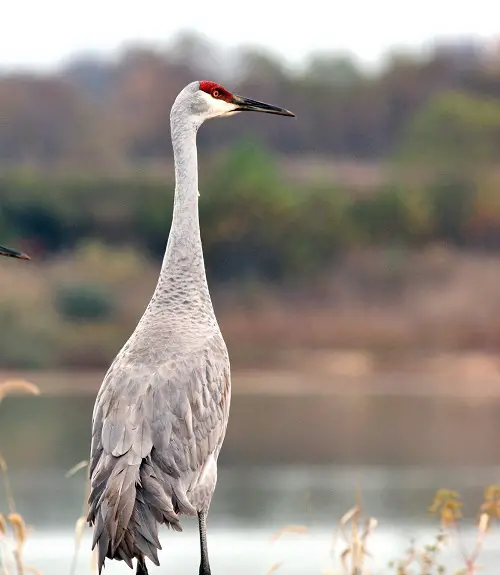
Scientific Name: Antigone canadensis
Sandhill Cranes are known for their resonant calls and extensive migrations. Their thick coating of fur makes them appear larger than they actually are.
6. Black-necked Stork
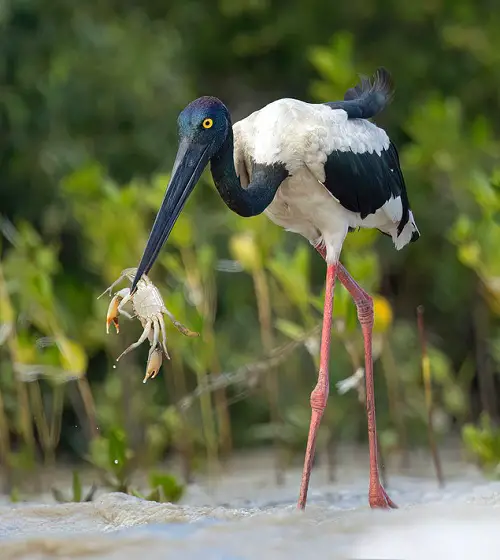
Scientific Name: Ephippiorhynchus asiaticus
A striking wetland bird with a black neck and sharp bill, the Black-necked stork has long pink red legs.
7. Grey Heron
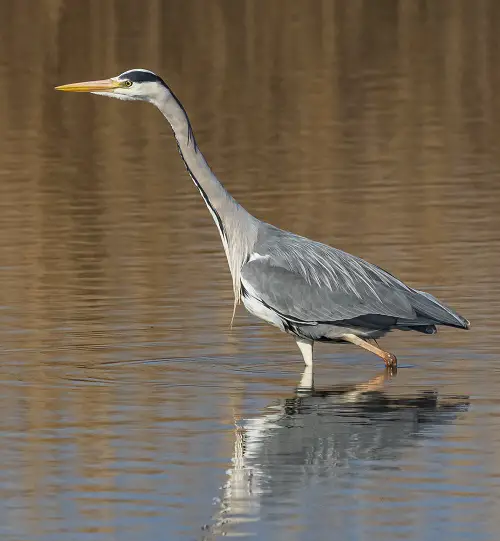
Scientific Name: Ardea cinerea
Patient and stealthy, grey herons might not have as long legs as the other birds on this list but it surely deserves a mention!
8. Great Blue Heron

Scientific Name: Ardea herodias
As North America’s largest herons, it is a common sight in healthy, thriving wetlands. When it catches fish – that whole scene is a treat to watch!
Shore Birds with Curved Beaks
9. Snowy Egret
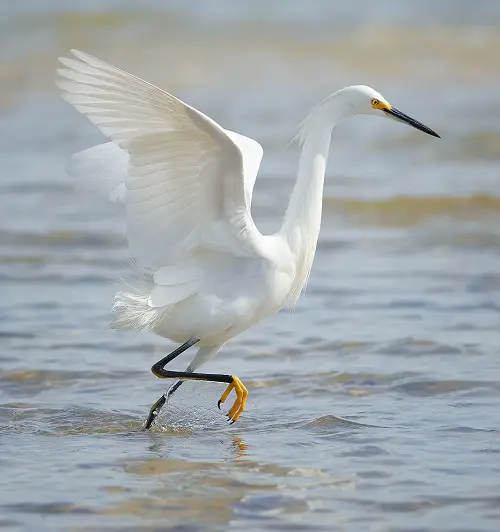
Scientific Name: Egretta thula
Having snowy white plumage and yellow feet, this elegant small wetland wader has contrasting long legs in black color.
10. Cattle Egret

Scientific Name: Bubulcus ibis
Often spotted near cattles, these birds mainly feed on insects stirred by the livestock. They have long legs in yellow-cream color.
11. American White Pelican

Scientific Name: Pelecanus erythrorhynchos
American White Pelicans are among the largest water birds with legs that might not be as tall as the others on this list – but they are lengthy for sure!
12. Andean Flamingo

Scientific Name: Phoenicoparrus andinus
Adaptable to precarious high-altitude lakes, Andean Flamingos have slender legs that match their bodies quite well.
Ugliest Birds in the World
13. Little Egret

Scientific Name: Egretta garzetta
With white feathers and distinct black legs, little egrets have a contrasting look to them! You can easily spot them near water bodies.
14. Intermediate Egret

Scientific Name: Ardea intermedia
A vital player in Asian and African wetlands, it is a small bird in comparison with the others on this list – it has long black legs!
15. White-faced Ibis
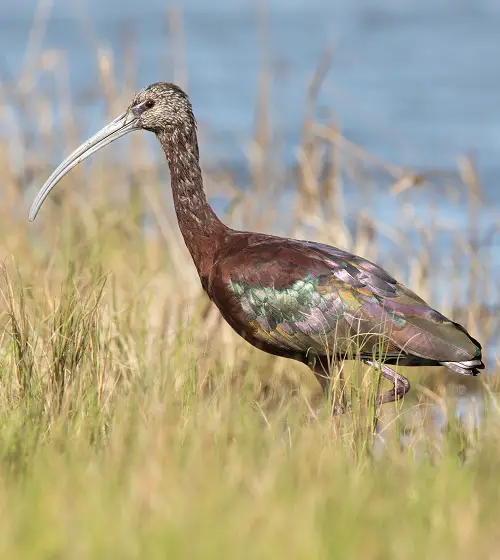
Scientific Name: Plegadis chihi
White-faced Ibises have long curved bills and a fantastic color combination on its feathers. Their legs are slim and slender.
16. Glossy Ibis
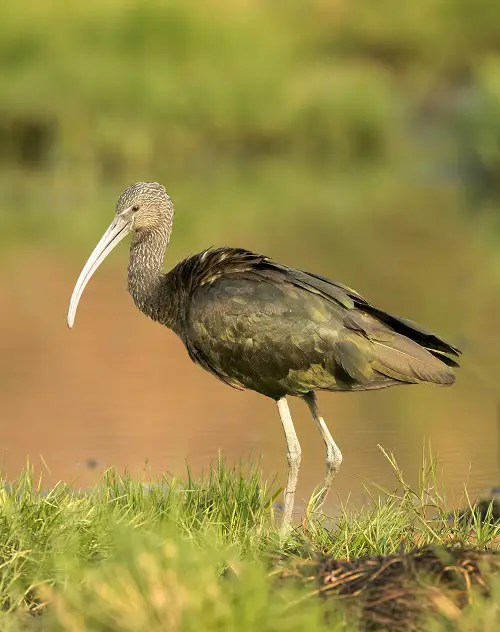
Scientific Name: Plegadis falcinellus
Shimmering glossy ibises has a white curvy beak with a green-brown foliage. The bird has slender white legs.
17. Sacred Ibis

Scientific Name: Threskiornis aethiopicus
Sacred Ibis is a sight to watch when it takes off to a flight! Its wings are bordered with black lines and has long black legs.
18. Common Crane

Scientific Name: Grus grus
Famed for their bold trumpeting calls, these birds are a common spotting near fields. They have thick legs that might not be as long as others, however.
19. Whooping Crane
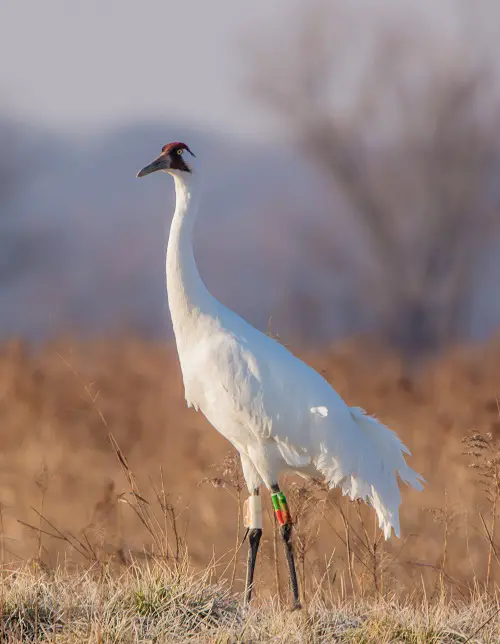
Scientific Name: Grus americana
Whooping Cranes are critically endangered and have white feathers and red crowns. They have black, tall legs.
20. Hooded Crane
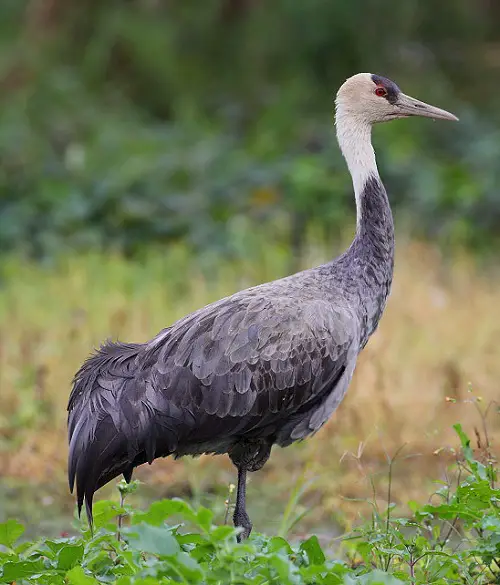
Scientific Name: Grus monacha
These birds exhibit a subtle combination of white and brown-black. They are a common sight across wetlands and open fields.
21. Black Stork
![]()
Scientific Name: Ciconia nigra
Black Storks have distinctive black plumage with white markings. Their red long legs are quite eye-catching!
Birds with Red Chest
22. Eurasian Spoonbill

Scientific Name: Platalea leucorodia
With their unique flat blue beaks, white body, and matching long black legs – they are picture worthy birds for sure!
23. Roseate Spoonbill
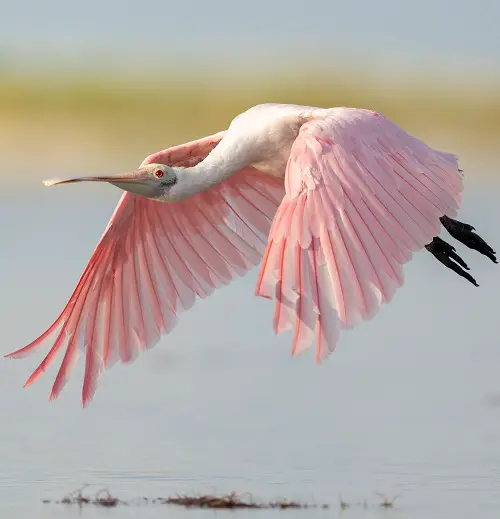
Scientific Name: Platalea ajaja
Roseate Spoonbills have pink plumage with a hint of white here and there, making them quite stunning to look at!
24. Great White Pelican

Scientific Name: Pelecanus onocrotalus
Great White Pelicans are remarkable waterbirds with their brilliant white feathers and massive bills.
25. Yellow-billed Stork

Scientific Name: Mycteria ibis
In African wetlands and river ecosystems, the yellow-billed storks are a common sight. They have light pink-red long legs.
What to Feed Birds in the Balcony Garden
26. Jabiru Stork

Scientific Name: Jabiru mycteria
Jabiru Storks rank among the tallest flying birds in the Americas. They have stunning blue feathers and long pink legs.
27. Australian White Ibis
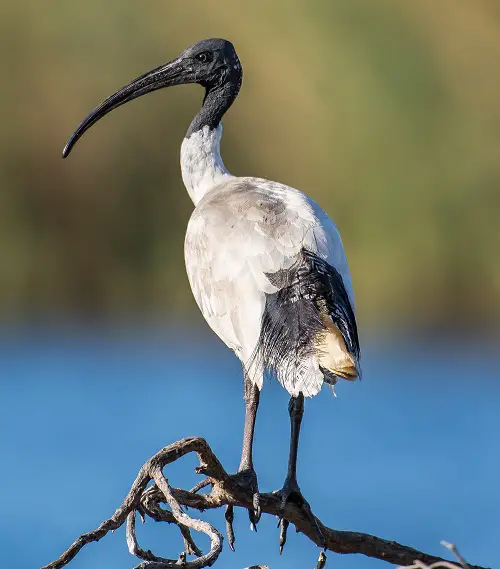
Scientific Name: Threskiornis molucca
Australian White Ibises thrive in cities, often scavenging in urban areas. They have a black head and matching legs!
28. White-necked Stork
![]()
Scientific Name: Ciconia episcopus
With black and white plumage, the white-necked storks thrive near wetland and coastal habitats. Their legs can be 1 feet long!
29. Milky Stork
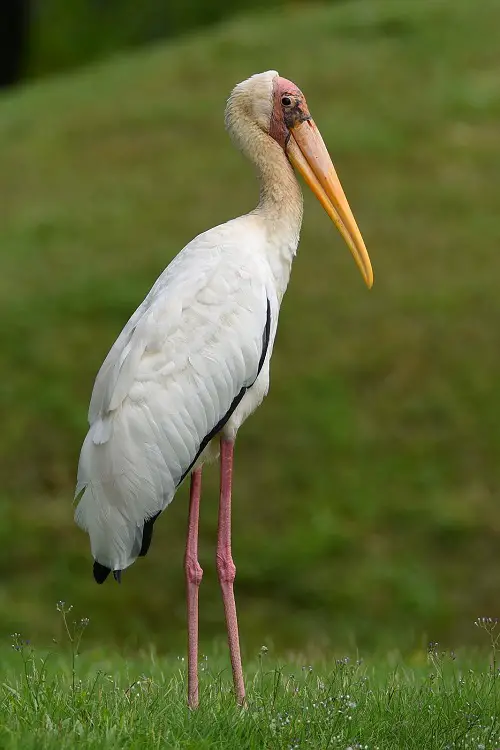
Scientific Name: Mycteria cinerea
Milky Storks, with pale plumage and dark markings, commonly inhabit coastal habitats, playing an important ecosystem balance role.
30. Lesser Flamingo

Scientific Name: Phoeniconaias minor
Lesser Flamingos, the tiniest of all flamingo kinds, are famous for their vibrant pink hue and tall, pink-red legs!
31. Maguari Stork
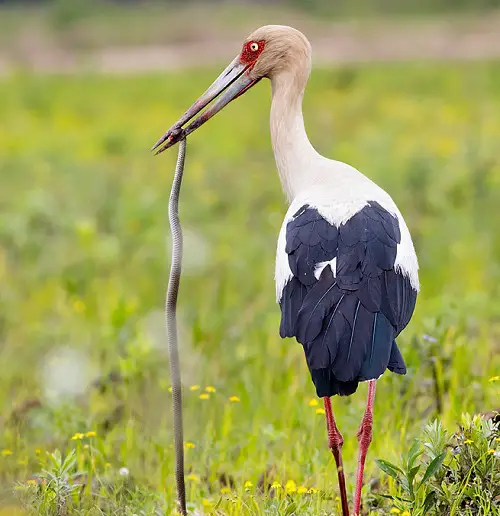
Scientific Name: Ciconia maguari
The presence of maguari storks directly reflects pristine, undisturbed habitats. They have a striking combination of red and black on the feathers.
32. Oriental White Stork

Scientific Name: Ciconia boyciana
Associated with good fortune and prosperity, these birds with long necks have pink-white legs. They are a common spotting in open fields.


